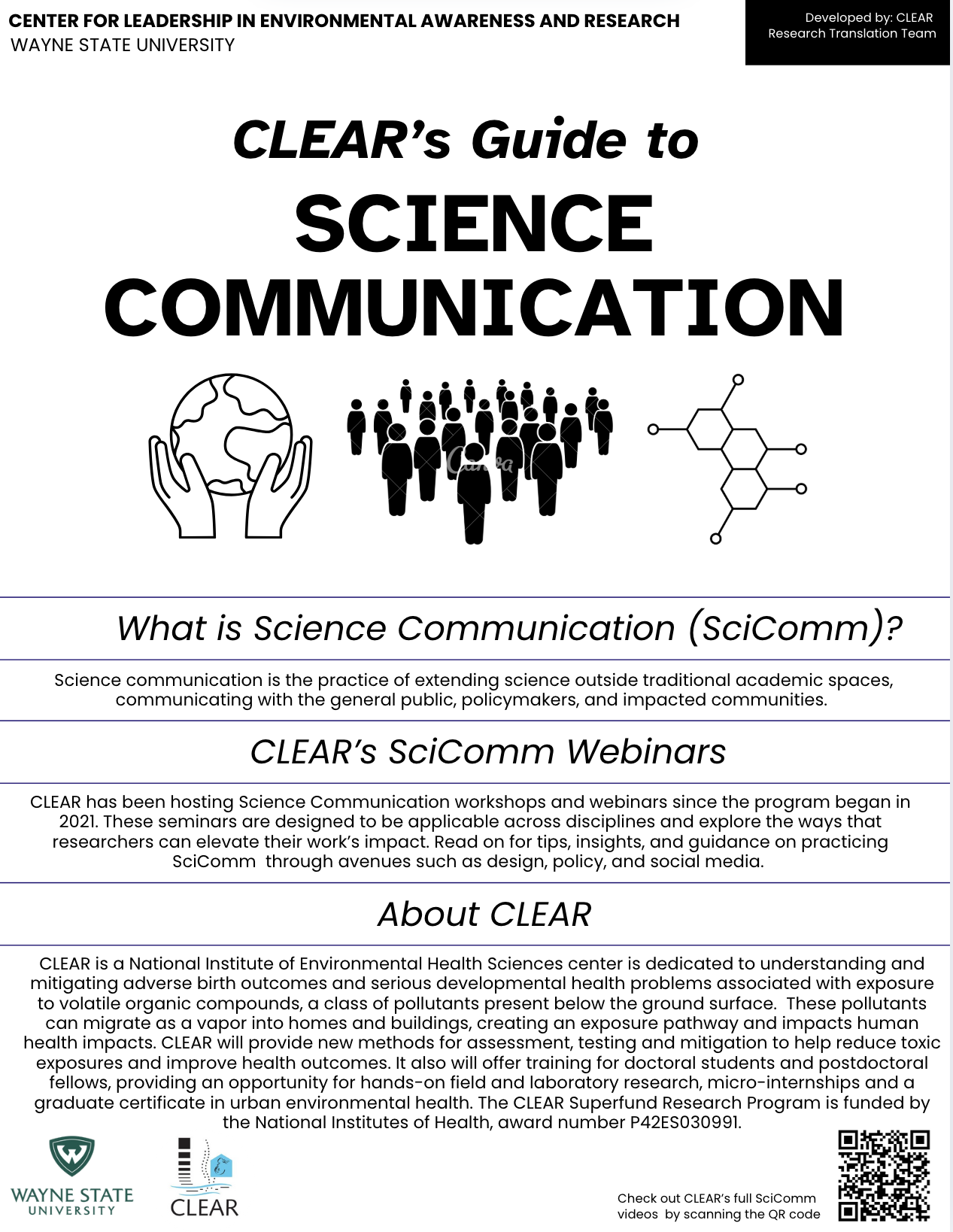Research Translation team launches ArcGIS StoryMap and Sci Comm Guidebook
Dr. Rahul Mitra (Research Translation) and graduate student assistant Colleen Linn launched two new products that will help CLEAR researchers to more effectively communicate their work with wider audiences, including impacted communities and policymakers. These are an interactive StoryMap platform showcasing CLEAR's work and research outputs, and a digital guidebook summarizing science communication best practices.
The team started work on the StoryMap starting in the summer of 2024, through its partnership with the Wayne State University Humanities Clinic. PhD student in History, D'Arcy Cook, interned with CLEAR's research translation team and designed an ArcGIS storymap that featured the research purpose and processes of CLEAR's Field Study and Sensing/Remediation Study, the Community Engagement Core, and provided Detroit residents with actionable steps to reduce VOC exposure and reach out to their elected representatives. F. Gianluca Sperone from CLEAR's data management core provided teaching support for Cook. Over the Fall 2024 semester, Mitra and Linn further developed and refined the StoryMap, which is available for public viewing here.

Additionally, this past winter Linn created a digital science communication guidebook, based on the valuable best practices and strategies shared by experts during the first 2.5 years of CLEAR's NIEHS funding. The guidebook can help researchers tackle a variety of tools and audiences to better share their research, avoiding scientific jargon and in terms that resonate with key stakeholders. The guidebook is available for download here on CLEAR's website, along with the webinars of science communication workshops hosted over the years.

The RT team plans to continue crafting communication products such as these to help researchers with distilling their latest research into approachable and communicable mediums, and to increase transparency between scientific research processes, the public, and community members.